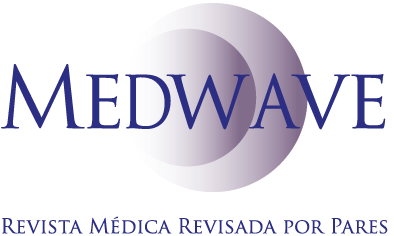Artículo de revisión
Published on 20 de octubre de 2025 | http://doi.org/10.5867/medwave.2025.09.3026
Available evidence on integrating COVID-19 into sentinel surveillance systems: A scoping review
Back to article
Main findings from COVID-19 monitoring.
| Chicago, USA, 2022 | Patients who received SARS-CoV-2 testing in community settings. | Sentinel surveillance showed increases in R(t) weeks before hospital data recorded the same increase. |
| Portugal, 2021 to 2022 | Of these (n = 324 872), 13 952 met criteria for sentinel specimen with positive diagnosis in 3607 specimens. | Through Nowcasting with an assessment date of February 27, 2021, sentinel case counts, now predicted, suggested that R(t) had increased beyond 1.0. |
| Castilla y León, España, 2021 to 2022 | SARI sentinel surveillance system based on electronic health records | A high correlation was obtained between SARI cases or hospitalizations for respiratory infection and COVID-19 incidence (ρ = 0.78 and ρ = 0.82, respectively). SARI cases detected the epidemic peak of COVID-19 one week earlier. A weak correlation was observed between SARI and influenza cases (ρ = -0.20). |
| Cataluña, España, 2019 to 2020 | PIDARIC primary care network n = 878 respiratory samples from patients with ILI and ARI symptoms. | Weekly estimates of COVID-19 incidence are consistent with the universal surveillance conducted in Castilla y León until the change in national strategy (week 12 of 2022). The pooled Pearson correlation coefficient before that week was 0.997 (p < 0.001) and 0.996 (p < 0.001) and 0.921 (p < 0.001) for the epidemic and non-epidemic periods, respectively. |
| Egipto, 2022 | Integrated surveillance of acute respiratory infections | A higher positivity rate was observed among SARI patients compared to ILI patients (45.7% versus 22.4%, p < 0.01). The majority of SARI cases (95.3%) were caused by SARS-CoV-2, compared with 65.4% of ILI cases. |
| China, 2022 to 2023 | (n = 18 160) | Analyzing data from different regions of China (southwest, central, north, and northeast) the rate of SARS-CoV-2 positives peaked in week 51 (72.5%, 72.3%, 41.2%, and 37.5%, respectively). Using sentinel surveillance with ILI case definitions is capable of detecting peaks in the positive rate. |
| Bangladesh, 2022 to 2023 | Patients monitored during the fifth and sixth waves of COVID-19 | The majority of patients meeting the COVID-19 suspect case definition (2141, 91%) were identified in the outpatient departments of all surveillance hospitals, and of these, 865 (40%) were confirmed to have COVID-19. In contrast, among all patients enrolled in the inpatient department, 57 (28%) were found to be positive for COVID-19. |
| California, USA, 2022 | (n = 115 844) | Among those positive for SARS-CoV-2, 29% met the ILI clinical case definition and 25.4% met the case definition. A smaller proportion of non-COVID-19 coronavirus-positive persons met ILI (21.1%) or CLI (17.4%) criteria, and even fewer of those positive for rhinovirus/enterovirus met either definition (17.2% for ILI and 13.6% for CLI). However, specificity exceeded 80% for the ILI and CLI definitions for SARS-CoV-2, rhinovirus/enterovirus, or a non-COVID-19 coronavirus. |
| Israel, 2022 to 2023 | Positive for SARS-CoV-2: 30 381 cases | When the national positivity rate was 2% or lower, sentinel surveillance was insufficient to detect SARS-CoV-2 activity. |
SARI, Severe Acute Respiratory Infection. ILI, Influenza-Like Illness.. PIDARIC, Pla d'informació de les infeccions respiratòries agudes a Catalunya. CLI, COVID-19-like illness.
Source: Prepared by the authors of this study.
